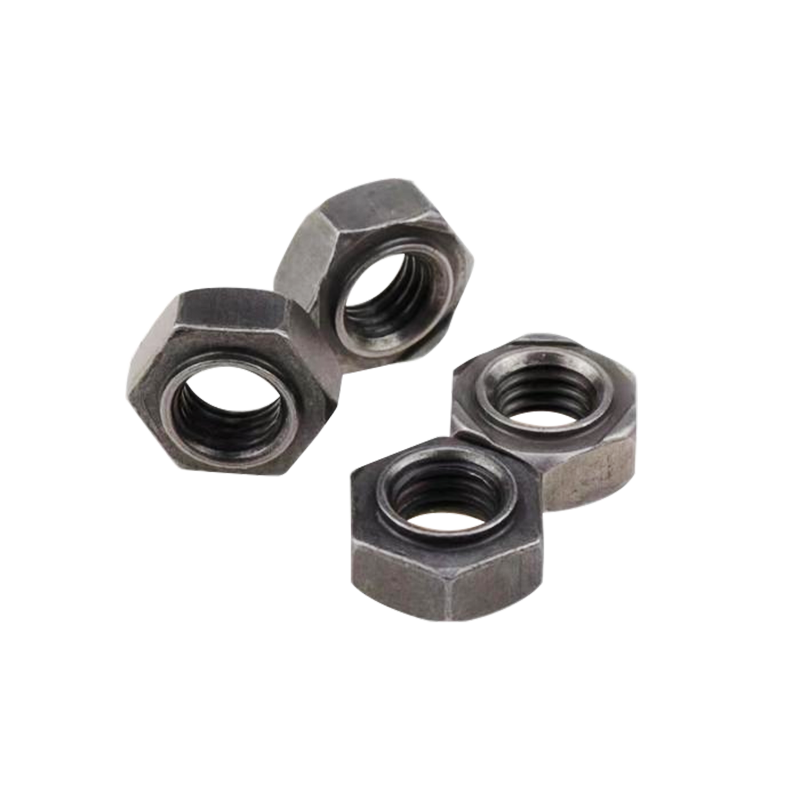How does the welding process affect the strength of the weld nut?
The welding process plays a pivotal role in determining the strength and reliability of hexagon weld nuts, which are integral fasteners in numerous industrial and manufacturing applications. Hexagon weld nuts, distinguished by their six-sided shape that facilitates easy gripping with tools, are designed for secure attachment through welding. This process fundamentally influences their strength, as it involves several key factors that directly impact the weld nut’s performance and durability.
When a hexagon weld nut is welded onto a metal surface, the welding process creates a robust connection by forming a bond between the weld nut and the substrate. This bond is achieved through heat and pressure, which fuse the material of the nut to the surface. The strength of this connection largely depends on the welding technique used, the quality of the weld, and the materials involved. Common methods include spot welding and projection welding, each offering different benefits. Spot welding provides a localized heat application, which is effective for thin materials, while projection welding allows for more substantial attachment points, suitable for thicker components.

The welding process essentially modifies the mechanical properties of the weld nut and the attached surface. Proper welding techniques ensure that the weld nut’s base and the wings or projections around it achieve a strong, consistent bond. This results in enhanced load-bearing capacity and resistance to shear forces, crucial for applications where reliability is paramount. Conversely, inadequate welding can lead to weak joints, which may fail under stress or vibration, compromising the integrity of the entire assembly.
Hexagon weld nuts are particularly advantageous due to their design, which includes a flat base and surrounding wings that increase the surface area for welding. This design not only facilitates a more secure attachment but also distributes stress more evenly across the joint, thereby reducing the likelihood of failure. The strength imparted by the welding process makes hexagon weld nuts a preferred choice in high-vibration environments or critical structural applications.
Furthermore, the material used in the manufacture of hexagon weld nuts, typically high-strength steel or other alloys, complements the welding process by enhancing overall durability. The combination of a well-executed weld and high-quality materials results in a fastener that can withstand substantial loads and stresses. This makes hexagon weld nuts highly effective in a range of industries, from automotive and construction to manufacturing and metal fabrication.
The welding process is crucial in defining the strength and reliability of hexagon weld nuts. By creating a robust bond between the nut and the metal surface, the welding technique ensures that these fasteners can handle significant loads and resist various stresses. The inherent design of hexagon weld nuts, combined with effective welding practices, delivers a product that excels in durability and performance, making it an ideal choice for demanding applications.
Related products
-

Pan Head Cross Series
-

Countersunk Cross Self-Tapping Screw
-

Double Countersunk Rice Fiber Board Nail
-

Large Flat Head Plum Blossom Groove Grass Rope Nail
-

Grade 8.8 Outer Hexagonal Bolt
-

8.8 Grade Tooth Bar Full Teeth
-

Square Clamp Right Angle Screw
-

Hexagonal Galvanized Nut
-

Iron Galvanized Flange Nut Hexagonal Anti Slip Locking Belt Tooth Washer Screw Cap
-

Stainless Steel Outer Hexagonal Bolt
-

Stainless Steel Countersunk Head Self-Tapping Screw
-

410 Stainless Steel Outer Hexagonal Drill Tail Screw

 English
English  English
English 中文简体
中文简体 русский
русский


